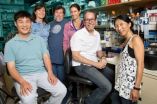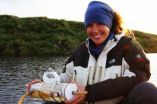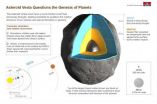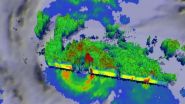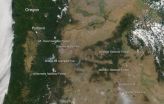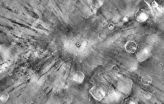(Press-News.org) VIDEO:
Salk scientists explain the implications of their latest finding and how the treatment reverses symptoms of type 2 diabetes in mice without side effects.
Click here for more information.
LA JOLLA—In mice with diet-induced diabetes—the equivalent of type 2 diabetes in humans—a single injection of the protein FGF1 is enough to restore blood sugar levels to a healthy range for more than two days. The discovery by Salk scientists, published today in the journal Nature, could lead to a new generation of safer, more effective diabetes drugs.
The team found that sustained treatment with the protein doesn't merely keep blood sugar under control, but also reverses insulin insensitivity, the underlying physiological cause of diabetes. Equally exciting, the newly developed treatment doesn't result in side effects common to most current diabetes treatments.
"Controlling glucose is a dominant problem in our society," says Ronald M. Evans, director of Salk's Gene Expression Laboratory and corresponding author of the paper. "And FGF1 offers a new method to control glucose in a powerful and unexpected way."
Type 2 diabetes, which can be brought on by excess weight and inactivity, has skyrocketed over the past few decades in the United States and around the world. Almost 30 million Americans are estimated to have the disease, where glucose builds up in the bloodstream because not enough sugar-carting insulin is produced or because cells have become insulin-resistant, ignoring signals to absorb sugar. As a chronic disease, diabetes can cause serious health problems and has no specific cure. Rather it is managed—with varying levels of success—through a combination of diet, exercise and pharmaceuticals.
Diabetes drugs currently on the market aim to boost insulin levels and reverse insulin resistance by changing expression levels of genes to lower glucose levels in the blood. But drugs, such as Byetta, which increase the body's production of insulin, can cause glucose levels to dip too low and lead to life-threatening hypoglycemia, as well as other side effects.
In 2012, Evans and his colleagues discovered that a long-ignored growth factor had a hidden function: it helps the body respond to insulin. Unexpectedly, mice lacking the growth factor, called FGF1, quickly develop diabetes when placed on a high-fat diet, a finding suggesting that FGF1 played a key role in managing blood glucose levels. This led the researchers to wonder whether providing extra FGF1 to diabetic mice could affect symptoms of the disease.
Evans' team injected doses of FGF1 into obese mice with diabetes to assess the protein's potential impact on metabolism. Researchers were stunned by what happened: they found that with a single dose, blood sugar levels quickly dropped to normal levels in all the diabetic mice.
"Many previous studies that injected FGF1 showed no effect on healthy mice," says Michael Downes, a senior staff scientist and co-corresponding author of the new work. "However, when we injected it into a diabetic mouse, we saw a dramatic improvement in glucose."
The researchers found that the FGF1 treatment had a number of advantages over the diabetes drug Actos, which is associated with side effects ranging from unwanted weight gain to dangerous heart and liver problems. Importantly, FGF1—even at high doses—did not trigger these side effects or cause glucose levels to drop to dangerously low levels, a risk factor associated with many glucose-lowering agents. Instead, the injections restored the body's own ability to naturally regulate insulin and blood sugar levels, keeping glucose amounts within a safe range—effectively reversing the core symptoms of diabetes.
"With FGF1, we really haven't seen hypoglycemia or other common side effects," says Salk postdoctoral research fellow Jae Myoung Suh, a member of Evans' lab and first author of the new paper. "It may be that FGF1 leads to a more 'normal' type of response compared to other drugs because it metabolizes quickly in the body and targets certain cell types."
The mechanism of FGF1 still isn't fully understood—nor is the mechanism of insulin resistance—but Evans' group discovered that the protein's ability to stimulate growth is independent of its effect on glucose, bringing the protein a step closer to therapeutic use.
"There are many questions that emerge from this work and the avenues for investigating FGF1 in diabetes and metabolism are now wide open," Evans says. Pinning down the signaling pathways and receptors that FGF1 interacts with is one of the first questions he'd like to address. He's also planning human trials of FGF1 with collaborators, but it will take time to fine-tune the protein into a therapeutic drug.
"We want to move this to people by developing a new generation of FGF1 variants that solely affect glucose and not cell growth," he says. "If we can find the perfect variation, I think we will have on our hands a very new, very effective tool for glucose control."
INFORMATION:
Other researchers on the study were Maryam Ahmadian, Eiji Yoshihara, Weiwei Fan, Yun-Qiang Yin, Ruth T. Yu, and Annette R. Atkins of the Salk Institute for Biological Studies; Weilin Liu, Johan W. Jonker, Theo van Dijk, and Rick Havinga of the University of Groningen; Christopher Liddle of the University of Sydney; Denise Lackey, Olivia Osborn, and Jerrold M. Olefsky of the University of California at San Diego; and Regina Goetz, Zhifeng Huang, and Moosa Mohammadi of the New York University School of Medicine.
Ronald Evans is a Howard Hughes Medical Institute investigator and is also supported by grants from the National Institutes of Health, the Leona M. and Harry B. Helmsley Charitable Trust, the Glenn Foundation for Medical Research, Ipsen/Biomeasure, CIRM, and the Ellison Medical Foundation. Other study authors received grants from the National Institutes of Health, the Australian National Health and Medical Research Council, the European Research Council, the Human Frontier Science Program, the Netherlands Organisation for Scientific Research, and the Dutch Digestive Foundation.
About the Salk Institute for Biological Studies
The Salk Institute for Biological Studies is one of the world's preeminent basic research institutions, where internationally renowned faculty probes fundamental life science questions in a unique, collaborative and creative environment. Focused both on discovery and on mentoring future generations of researchers, Salk scientists make groundbreaking contributions to our understanding of cancer, aging, Alzheimer's, diabetes and infectious diseases by studying neuroscience, genetics, cell and plant biology, and related disciplines.
Faculty achievements have been recognized with numerous honors, including Nobel Prizes and memberships in the National Academy of Sciences. Founded in 1960 by polio vaccine pioneer Jonas Salk, MD, the Institute is an independent nonprofit organization and architectural landmark.
One injection stops diabetes in its tracks
Treatment reverses symptoms of type 2 diabetes in mice without side effects
2014-07-16
ELSE PRESS RELEASES FROM THIS DATE:
Study: Climate-cooling arctic lakes soak up greenhouse gases
2014-07-16
New University of Alaska Fairbanks research indicates that arctic thermokarst lakes stabilize climate change by storing more greenhouse gases than they emit into the atmosphere.
Countering a widely-held view that thawing permafrost accelerates atmospheric warming, a study published this week in the scientific journal Nature suggests arctic thermokarst lakes are 'net climate coolers' when observed over longer, millennial, time scales.
"Until now, we've only thought of thermokarst lakes as positive contributors to climate warming," says lead researcher Katey Walter Anthony, ...
Scientists find way to trap, kill malaria parasite
2014-07-16
Scientists may be able to entomb the malaria parasite in a prison of its own making, researchers at Washington University School of Medicine in St. Louis report July 16 in Nature.
As it invades a red blood cell, the malaria parasite takes part of the host cell's membrane to build a protective compartment. To grow properly, steal nourishment and dump waste, the parasite then starts a series of major renovations that transform the red blood cell into a suitable home.
But the new research reveals the proteins that make these renovations must pass through a single pore ...
Asteroid Vesta to reshape theories of planet formation
2014-07-16
EPFL researchers have a better understanding of the asteroid Vesta and its internal structure, thanks to numerical simulations and data from the space mission Dawn. Their findings, published today in Nature, question contemporary models of rocky planet formation, including that of Earth.
With its 500 km diameter, the asteroid Vesta is one of the largest known planet embryos. It came into existence at the same time as the Solar System. Spurring scientific interest, NASA sent the Dawn spacecraft into Vesta's orbit for one year between July 2011 and July 2012.
Data gathered ...
NASA sees Typhoon Rammasun exit the Philippines
2014-07-16
Typhoon Rammasun passed through the central Philippines overnight and NASA satellite imagery showed that the storm's center moved into the South China Sea. NASA's TRMM satellite showed the soaking rains that Rammasun brought to the Philippines as it tracked from east to west.
Before Rammasun made landfall, the Tropical Rainfall Measuring Mission or TRMM satellite passed over the storm and measured cloud heights and rainfall rates. On July 14, 2014 at 18:19 UTC (2:19 p.m. EDT), TRMM spotted powerful, high thunderstorms reaching heights of almost 17km (10.5 miles). Rain ...
Researchers demonstrate health risks posed by 'third hand' tobacco smoke
2014-07-16
Research led by the University of York has highlighted the potential cancer risk in non-smokers – particularly young children – of tobacco smoke gases and particles deposited to surfaces and dust in the home.
Until now, the risks of this exposure known as 'third hand tobacco smoke' have been highly uncertain and not considered in public policy.
However, a new study published in the journal Environment International, has estimated for the first time the potential cancer risk by age group through non-dietary ingestion and dermal exposure to third hand smoke. The results ...
Squid skin protein could improve biomedical technologies, UCI study shows
2014-07-16
Irvine, Calif., July 16, 2014 – The common pencil squid (Loliginidae) may hold the key to a new generation of medical technologies that could communicate more directly with the human body. UC Irvine materials science researchers have discovered that reflectin, a protein in the tentacled creature's skin, can conduct positive electrical charges, or protons, making it a promising material for building biologically inspired devices.
Currently, products such as retinal implants, nerve stimulators and pacemakers rely on electrons – particles with negative charges – to transmit ...
National Psoriasis Foundation awards $1.05 million in research grants
2014-07-16
PORTLAND, Ore. (July 16, 2014)—Thirteen scientists received a total of $1.05 million in funding from the National Psoriasis Foundation for projects that aim to identify new treatments and a cure for psoriasis—an autoimmune disease that appears on the skin, affecting 7.5 million Americans—and psoriatic arthritis—an inflammatory arthritis that affects the joints and tendons, occurring in up to 30 percent of people with psoriasis.
Learn more about the NPF research grant program: http://www.psoriasis.org/research.
This year, three scientists each received a two-year, $200,000 ...
70-foot-long, 52-ton concrete bridge survives series of simulated earthquakes
2014-07-16
VIDEO:
A 70-foot-long, 52-ton concrete bridge survived a series of earthquakes in the first multiple-shake-table experiment in the University of Nevada, Reno's new Earthquake Engineering Lab, the newest addition to the...
Click here for more information.
RENO, Nev. – A 70-foot-long, 52-ton concrete bridge survived a series of earthquakes in the first multiple-shake-table experiment in the University of Nevada, Reno's new Earthquake Engineering Lab, the newest addition to the ...
Dozens of fires plague Oregon
2014-07-16
Fires are a way of life during the hot, dry summer days, but that does not mean they are ever taken for granted. Thousands of lightning strikes Sunday (7/13) and early Monday (7/14) probably started most of the wildfires, which are burning on private, public and reservation land. Dozens of fires are plaguing the forest areas in the state of Oregon. In this image, are shown the Buzzard Fire, the Shaniko Butte fire, the Bridge 99 Complex fire, and the Saddle Draw Fire.
The Buzzard Complex fire began as a lightning strike. Difficult terrain, combined with extremely dry ...
Arizona State University, US Geological Survey project yields sharpest map of Mars surface properties
2014-07-16
Tempe, Ariz. -- A heat-sensing camera designed at Arizona State University has provided data to create the most detailed global map yet made of Martian surface properties.
The map uses data from the Thermal Emission Imaging System (THEMIS), a nine-band visual and infrared camera on NASA's Mars Odyssey orbiter. A version of the map optimized for scientific researchers is available at the U.S. Geological Survey (USGS).
The new Mars map was developed by the Geological Survey's Robin Fergason at the USGS Astrogeology Science Center in Flagstaff, Ariz., in collaboration ...
LAST 30 PRESS RELEASES:
A new way to map how cells choose their fate
Numbers in our sights affect how we perceive space
SIMJ announces global collaborative book project in commemoration of its 75th anniversary
Air pollution exposure and birth weight
Obstructive sleep apnea risk and mental health conditions among older adults
How talking slows eye movements behind the wheel
The Ceramic Society of Japan’s Oxoate Ceramics Research Association launches new international book project
Heart-brain connection: international study reveals the role of the vagus nerve in keeping the heart young
Researchers identify Rb1 as a predictive biomarker for a new therapeutic strategy in some breast cancers
Survey reveals ethical gaps slowing AI adoption in pediatric surgery
Stimulant ADHD medications work differently than thought
AI overestimates how smart people are, according to HSE economists
HSE researchers create genome-wide map of quadruplexes
Scientists boost cell "powerhouses" to burn more calories
Automatic label checking: The missing step in making reliable medical AI
Low daily alcohol intake linked to 50% heightened mouth cancer risk in India
American Meteorological Society announces Rick Spinrad as 2026 President-Elect
Biomass-based carbon capture spotlighted in newly released global climate webinar recording
Illuminating invisible nano pollutants: advanced bioimaging tracks the full journey of emerging nanoscale contaminants in living systems
How does age affect recovery from spinal cord injury?
Novel AI tool offers prognosis for patients with head and neck cancer
Fathers’ microplastic exposure tied to their children’s metabolic problems
Research validates laboratory model for studying high-grade serous ovarian cancer
SIR 2026 delivers transformative breakthroughs in minimally invasive medicine to improve patient care
Stem Cell Reports most downloaded papers of 2025 highlight the breadth and impact of stem cell research
Oxford-led study estimates NHS spends around 3% of its primary and secondary care budget on the health impacts of heat and cold in England
A researcher’s long quest leads to a smart composite breakthrough
Urban wild bees act as “microbial sensors” of city health.
New study finds where you live affects recovery after a hip fracture
Forecasting the impact of fully automated vehicle adoption on US road traffic injuries
[Press-News.org] One injection stops diabetes in its tracksTreatment reverses symptoms of type 2 diabetes in mice without side effects


